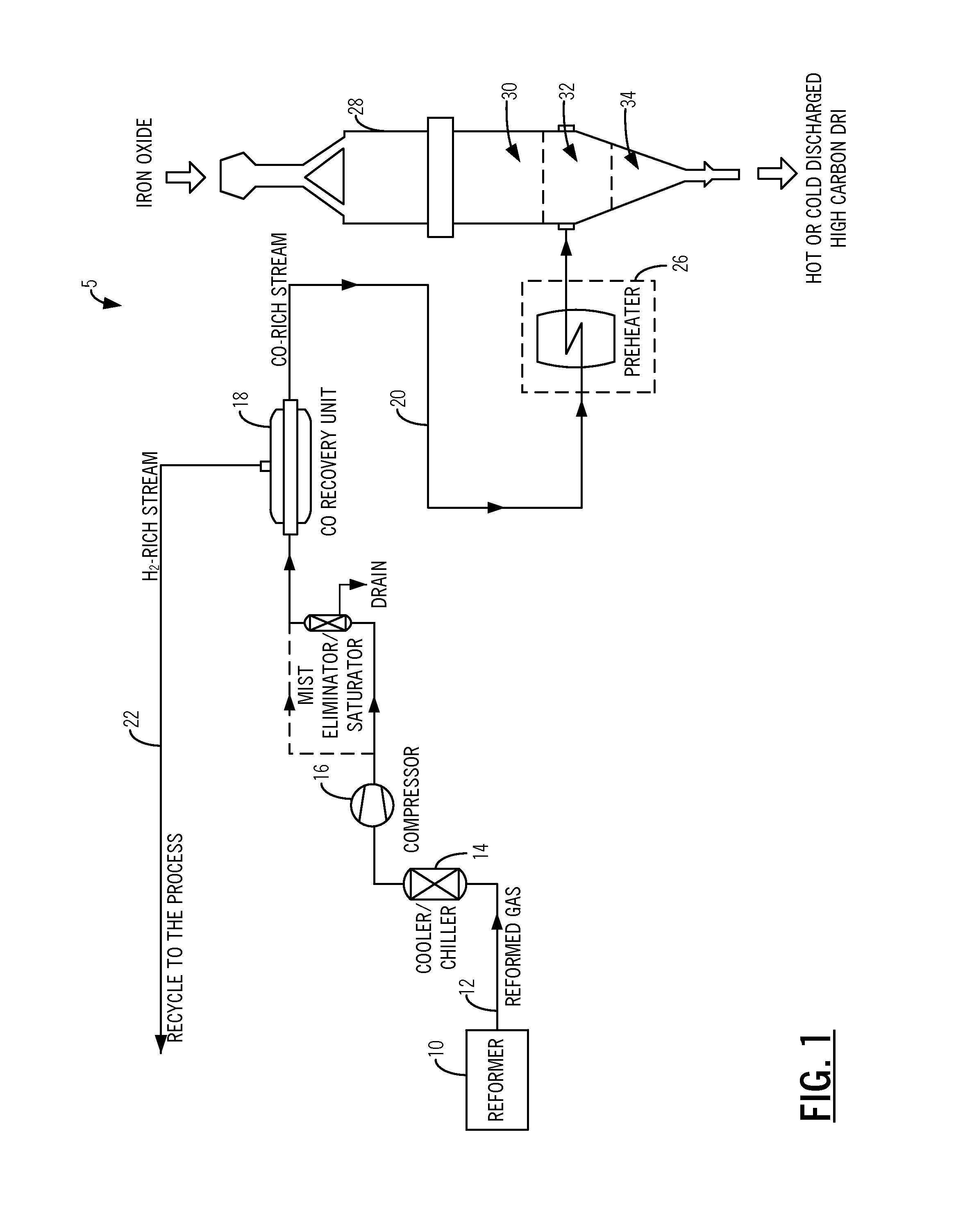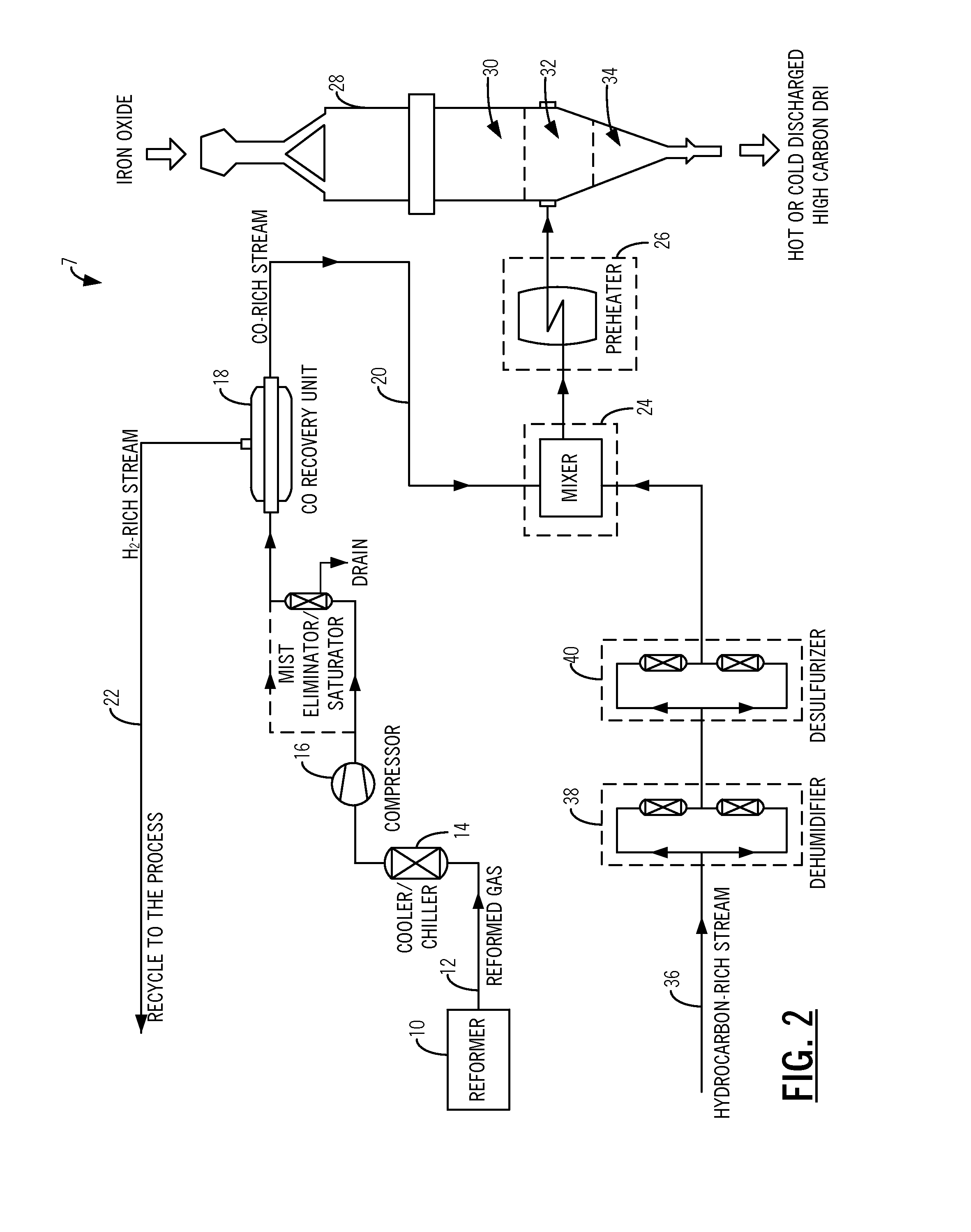Methods and systems for increasing the carbon content of sponge iron in a reduction furnace
- Summary
- Abstract
- Description
- Claims
- Application Information
AI Technical Summary
Benefits of technology
Problems solved by technology
Method used
Image
Examples
Embodiment Construction
[0025]The present invention provides an efficient and cost effective process for increasing the carbon content of DRI in a reformer-based DR plant. It provides a carbon monoxide-rich stream with limited impurities that is directly injected into the bulk of hot and partially or completely reduced materials inside the reduction furnace, or first blended with other gases (e.g. a hydrocarbon-rich gas stream). The combination of coking reactions noticeably increases the carbon content of the resulting DRI, while keeping the temperature of the bulk high.
[0026]For a DR plant utilizing a reforming step, of any type, the following are the main advantages:[0027]The design is simple and straightforward with respect to engineering, construction, and operation.[0028]The conventional method of injecting a hydrocarbon-rich stream into the reduction furnace increases the carbon content of the material by endothermic hydrocarbon cracking reactions; hence lowering the material temperature. The presen...
PUM
| Property | Measurement | Unit |
|---|---|---|
| Fraction | aaaaa | aaaaa |
| Fraction | aaaaa | aaaaa |
| Fraction | aaaaa | aaaaa |
Abstract
Description
Claims
Application Information
 Login to View More
Login to View More - R&D
- Intellectual Property
- Life Sciences
- Materials
- Tech Scout
- Unparalleled Data Quality
- Higher Quality Content
- 60% Fewer Hallucinations
Browse by: Latest US Patents, China's latest patents, Technical Efficacy Thesaurus, Application Domain, Technology Topic, Popular Technical Reports.
© 2025 PatSnap. All rights reserved.Legal|Privacy policy|Modern Slavery Act Transparency Statement|Sitemap|About US| Contact US: help@patsnap.com



